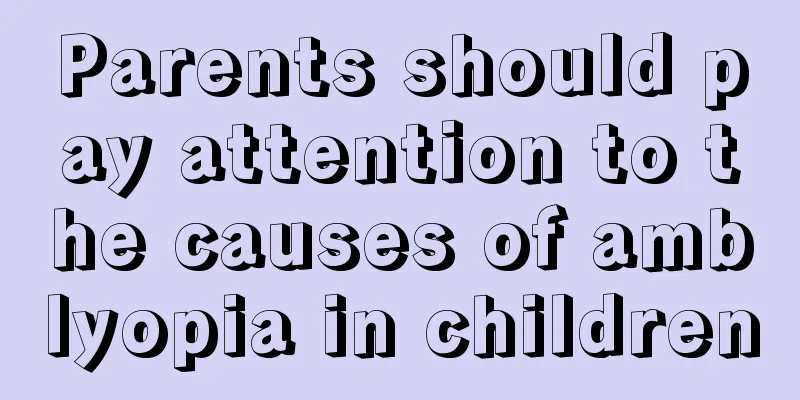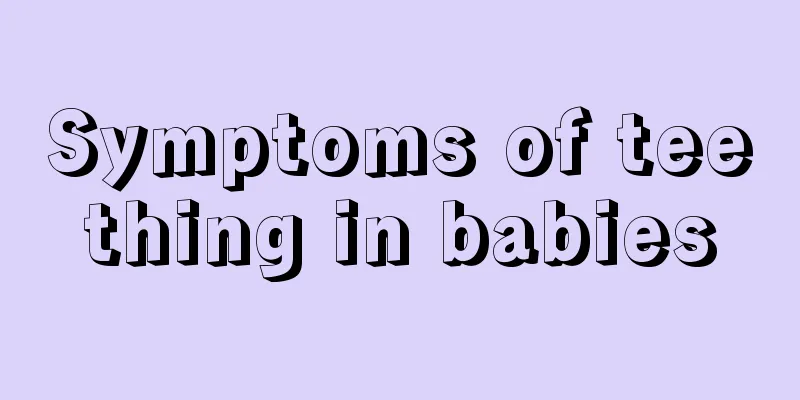Parents should pay attention to the causes of amblyopia in children

|
Nowadays, more and more children have vision problems, the most common of which is amblyopia. Common symptoms include visual impairment, and the vision cannot reach normal levels even after timely correction. Amblyopia in children can be caused by organic lesions, functional amblyopia, and binocular myopia. 1. Reasons Amblyopia caused by organic lesions (30%) It is due to incomplete development of the retina, optic nerve and even the cerebral cortex. It may also be due to birth injuries or retinal hemorrhage caused by other reasons. The visual development is affected and causes amblyopia. This type of amblyopia takes a long time to treat. Functional amblyopia (35%): It is caused by eye lesions after birth. If treated promptly, most people can almost restore normal vision. Functional amblyopia can be clinically divided into: 1. Strabismus amblyopia; 2. Anisometropic amblyopia; 3. Form deprivation amblyopia; 4. Special types of amblyopia: including refractive amblyopia, occlusion amblyopia, and congenital amblyopia. Refractive amblyopia (35%): Because both eyes have high myopia, hyperopia and astigmatism, which are not correctly corrected in childhood, the image in the macular area is blurred for a long time, which leads to amblyopia over time. 2. Common symptoms Visual impairment: often foggy and blurry vision 1. Visual acuity is lower than normal. Not only is the naked eye visual acuity low, but the corrected visual acuity is also lower than normal and meets the diagnostic criteria for amblyopia. 2. Visual "crowding phenomenon", that is, the amblyopic eye's ability to recognize individual visual letters is significantly higher than its ability to recognize letters in rows. For example, if the child is shown the letter E in a row of 0.3 letters, the amblyopic eye can easily identify it. However, once the letters E are displayed in a row, the amblyopic eye will find it difficult to distinguish the direction of the opening. 3. The contrast sensitivity of the amblyopic eye is reduced. 4. There are electrophysiological changes in the amblyopic eye, with the latency of the P100 wave of the visual evoked potential being prolonged and the amplitude being reduced. 5. Abnormal nature of gaze. When a normal person looks at a target, the image falls on the fovea of both eyes, forming a clear vision. Among amblyopic patients, some do not fixate on the fovea. Examination with a projection mirror can reveal parafoveal fixation, macular fixation and peripheral fixation. The further the focus point deviates from the fovea, the lower the vision and the more difficult it is to treat. |
<<: How to take care of children with cold and fever
>>: What to do if your child has a cold and stuffy nose
Recommend
How to treat cataracts in children?
Nowadays, many children in society suffer from ca...
When do children's teeth begin to develop?
The development of children's teeth is relati...
What to do if an eight-month-old baby has a fever and diarrhea
An eight-month-old baby is at the best time to pl...
What to do if an eight-month-old baby has diarrhea
Diarrhea has a great impact on the baby's hea...
Things to note when cutting baby's hair
In fact, babies are not familiar with this strang...
How to do sports training for children?
Children are a very important member of every fam...
Can a one-year-old baby eat walnut porridge?
I believe everyone knows that walnuts have the ef...
What to do if your child has heat stroke and vomits
Everyone's impression of summer is scorching ...
Why do children get rashes? Common types of rashes in children
There are many diseases that may cause skin aller...
What to do if your newborn's anus is red
Normally, newborns have delicate skin, so even a ...
How to prevent children from hunching over?
Many parents will find that their babies always s...
I took antipyretics but the fever didn't go down
When many children have a fever, the first reacti...
Acne on the child's face
Many people think that only boys and girls enteri...
What kind of diet should be used to treat Yin deficiency and internal heat in babies?
Recently, more and more babies are prone to yin d...
One and a half year old baby has small granules on his chin
A baby's body is very different from that of ...









